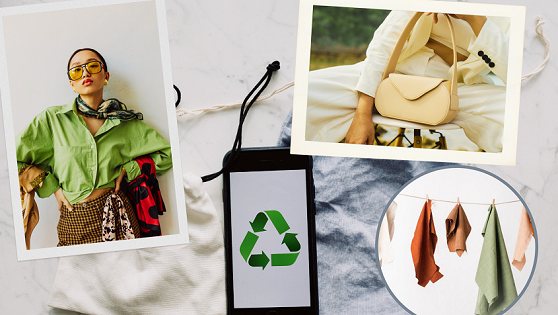
Today’s fashion industry is one undergoing a major transformation, dubbed the next evolution of fashion. Currently, the fashion industry is experiencing a huge transformation because of new trends, sustainability, technology, and the behaviors of the consumers, which change its perception, creation, and consumption.
Another change in the evolution of fashion that cannot be ignored is technology. It’s updating basic ways of making things, from advanced manufacturing methods like 3D printing to incorporating artificial intelligence into the design process.
Brands have begun to adopt strategies due to the fact that consumer behavior is shifting towards personalization and authentication. The next fashion evolution begins with sustainability, then technology, plus the understanding of consumer demands, without sacrificing innovation but minimizing societal and environmental impact.
Insights in Sustainability as the New Norm
As sustainability rises to the top of the fashion industry’s future, it’s going through a major transformation. Today, brands are catching on to the fact that it isn’t about sustainability anymore, but a must given the amount of consumer demand for responsible fashion.
Stella McCartney and Patagonia are spearheads of sustainable fashion, which brings the balance between style and sustainability with organic cottons, saved fabrics, and responsibly grown textiles.
However, consumer expectations are also extremely important. Consumers want transparency about how clothing is produced; they want brands with the smallest carbon footprint; they want brands that are embedded with sustainability and become integral to their values to occupy this competitive marketplace.
Moreover, incorporating sustainable practices will provide substantial benefits for businesses as well. This helps eco-friendly brands gain loyalty and trust amongst consumers as brands start to align with their values. As well as being more sustainable, becoming more sustainable brings cost savings, reduces waste, and economies of scale, and this is the new norm in fashion, helping to shape the future of the industry.
The Rise of Digital Fashion
At the same time, digital fashion shows are emerging as key stages for designers to display their collections. Virtual fashion events take advantage of AR and 3D for immersive experiences that reduce carbon footprints and bring fashion to a global audience.
Additionally, the adoption of non-fungible tokens (NFTs) has changed the thinking of ownership in fashion. With NFTs, designers can create unique digital pieces, thereby fostering involvement and investment in a digital market. Digital assets are more valuable than their corresponding physical counterparts.
The impact that this new digital fashion has on traditional retail is becoming bigger. To adapt to consumer preference for a holistic, interconnected experience, digital fashion melds virtual representation and physical realities, and retailers must integrate digital practices into their models.
Innovative Fabrics and Materials
There is a paradigm shift underway in the fashion industry of using the latest materials and fabrics that respond to sustainability and contemporary consumer tastes. If you are the type that wants to spend time interacting with fabric, textile technology is developing biodegradable materials with lower environmental impact. Organic cotton or hemp is being used by brands, while synthetic biodegradable options can be functional.
On the other hand, another important area of innovation is the implementation of recycled fabrics. Fashion labels are using post-consumer waste textiles to reduce landfill waste and the need for virgin materials. Good recycling processes create a circular economy and draw the consumer to your brand if you are focused on sustainable practices and transparent sourcing.
In addition, the innovation of smart textiles is a more exciting future of fashion. Tech firms are teaming up with the fashion industry to create smart fabrics that are both more performance- and aesthetically appealing and that are increasingly in demand for their versatility.
The Impact of AI and Technology on Fashion
Artificial intelligence (AI) and new technology are changing the face of fashion, forever altering how designers, manufacturers, and retailers act.
Technological advancement and innovation led to a drastic change in the fashion industry, which is causing fundamental changes to the consumer experience of fashion, including how they seek, discover, and interact with fashion brands. More and more consumers love omnichannel shopping experiences—combining online and offline retail environments—to enjoy the flexibility and convenience that they bring to the table.
Additionally, augmented reality (AR) is now a game changer in the fashion industry. AR technologies bring product visualization a paradigm shift as consumers can interact with virtual fitting rooms and consequently eliminate the uncertainty and improve customer satisfaction.
Another developing aspect of the consumer experience is personalization. Fashion brands utilize data analytics and AI to offer personalized recommendations, improve consumer engagement, and build brand loyalty.
Consumer Experience in the Next Evolution
The fashion industry is undergoing a significant transformation due to technological advancements and innovation, significantly altering consumer experiences, including how they discover, purchase, and engage with fashion brands. Omnichannel shopping experiences are gaining popularity, combining online and offline retail environments to offer flexibility and convenience to consumers.
Moreover, augmented reality (AR) has emerged as a game-changer in the fashion industry. AR technologies revolutionize product visualization, allowing consumers to interact with items in virtual fitting rooms, reducing uncertainty and enhancing customer satisfaction.
Personalization is another crucial aspect of the evolving consumer experience. Fashion brands are leveraging data analytics and AI to provide personalized recommendations, enhancing consumer engagement and fostering brand loyalty.
Embracing Change: Fashion Brands Leading the Way
Pioneering brands are currently leading the transformation of the fashion industry with sustainable practices, digital forwardness, and looking to new materials for a more innovative future. These are initiatives that are shaping the next evolution of fashion and defining the benchmark others should follow.
One such example is Stella McCartney, a brand that has taken such a stance on being a sustainable brand operation. Luxury and sustainability come together in McCartney’s cruelty-free: uses organic cotton, recycled polyester, and biodegradable fabrics, attracting eco-conscious consumers who influence other luxury brands to rethink their source material.
Nike too is another one that has been an early protagonist in embracing technological advances. Consumers can create their footwear using digital solutions like 3D printing and customization services offered by the company. Nike’s “Move to Zero” campaign is about ‘zero’ carbon and waste because Nike’s is committed to sustainability and fashion technology.
Adidas is also putting money into innovative materials, and another investment here is huge. Fashion brand Parley for the Oceans goes hand in hand with creating products from ocean plastics to increase awareness and promote sustainable sourcing.
Challenges and Opportunities Ahead
But right now, the fashion industry is moving into a very complex landscape of numerous challenges and opportunities.
Disruption of supply chains is one of the main issues, made worse by pandemic-related and global events such as the pandemic and geopolitical tensions. Delays due to disruptions in production and supply chain make inventory unsteady, lower consumer satisfaction, and put more pressure on companies to be transparent in their supply chain, which in turn gets them inclined towards sustainability and better ethical practices.
Further, the fashion industry requires regulatory changes. To tackle fashion sector pollution, governments across the world impose very strict environmental laws that compel brands to adopt eco-friendly practices to compete and stand apart in a crowded market.
But there are some promising opportunities for fashion brands that can change. The advent of digital technology is changing the fashion world from e-commerce growth to personalization of customer experience. Then there are also new business models in secondhand and circular fashion for conscious consumers.


